What to Do with 1L of Mercury Metal
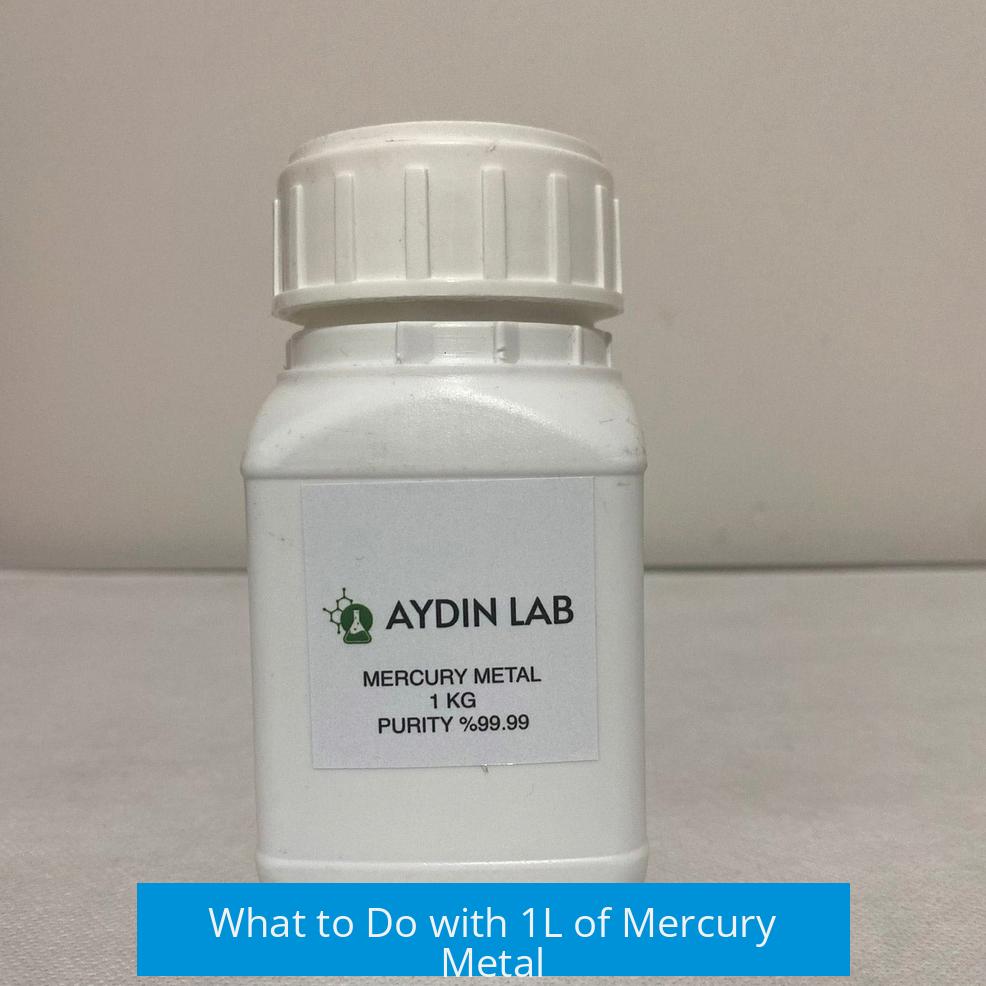
Disposing of or utilizing 1 liter of mercury metal involves significant safety, legal, and environmental considerations. Handling such a quantity requires strict precautions, and improper disposal can result in hazardous contamination. The most advised approach is to surrender it to a hazardous waste facility for safe processing. If use or sale is intended, utmost care and appropriate authorization must be in place.
Understanding Mercury and Its Risks
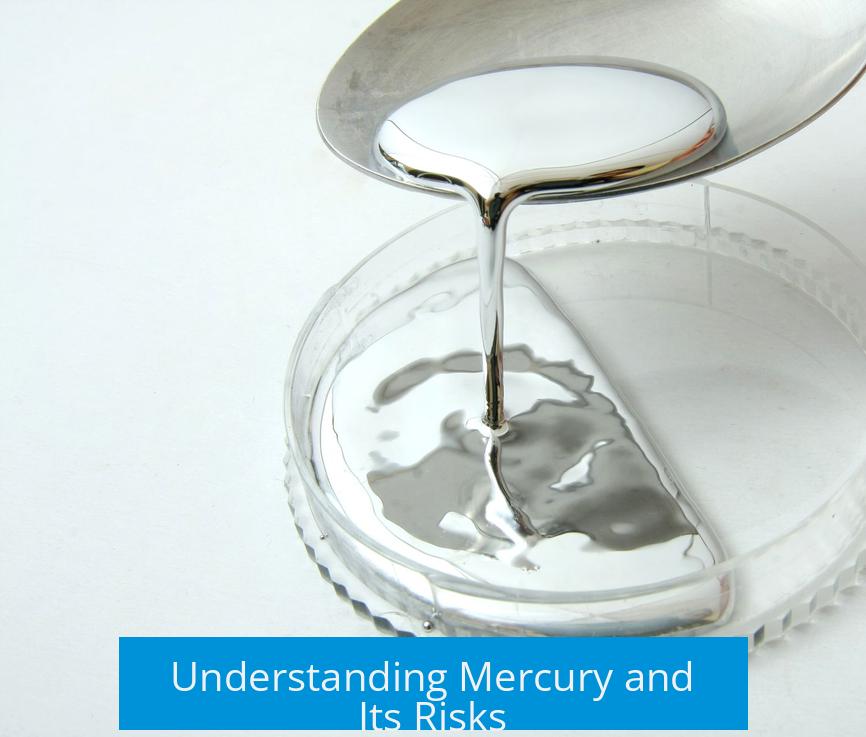
Mercury is a dense, silvery liquid metal at room temperature. Its density means that 1 liter weighs approximately 13.5 kilograms. The element is toxic and can pose health hazards through inhalation, skin contact, or environmental contamination. Due to its toxicity and volatility, mercury is tightly regulated worldwide.
Keeping 1 liter of elemental mercury presents considerable risk. Even slight spills can contaminate enclosed spaces. Once dispersed, mercury vapor can linger for decades, posing health risks such as neurological impairment.
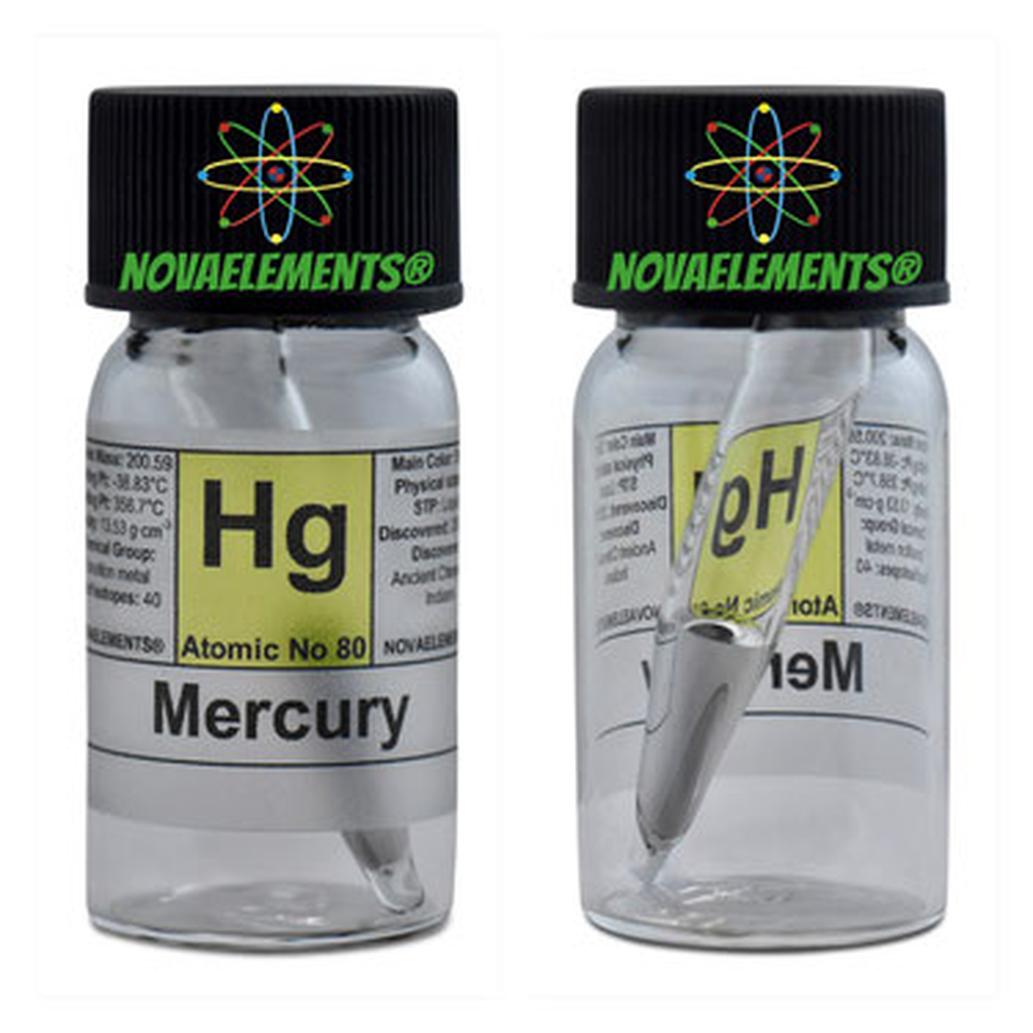
Disposal: The Primary Recommended Action
Contact Hazardous Waste Facilities
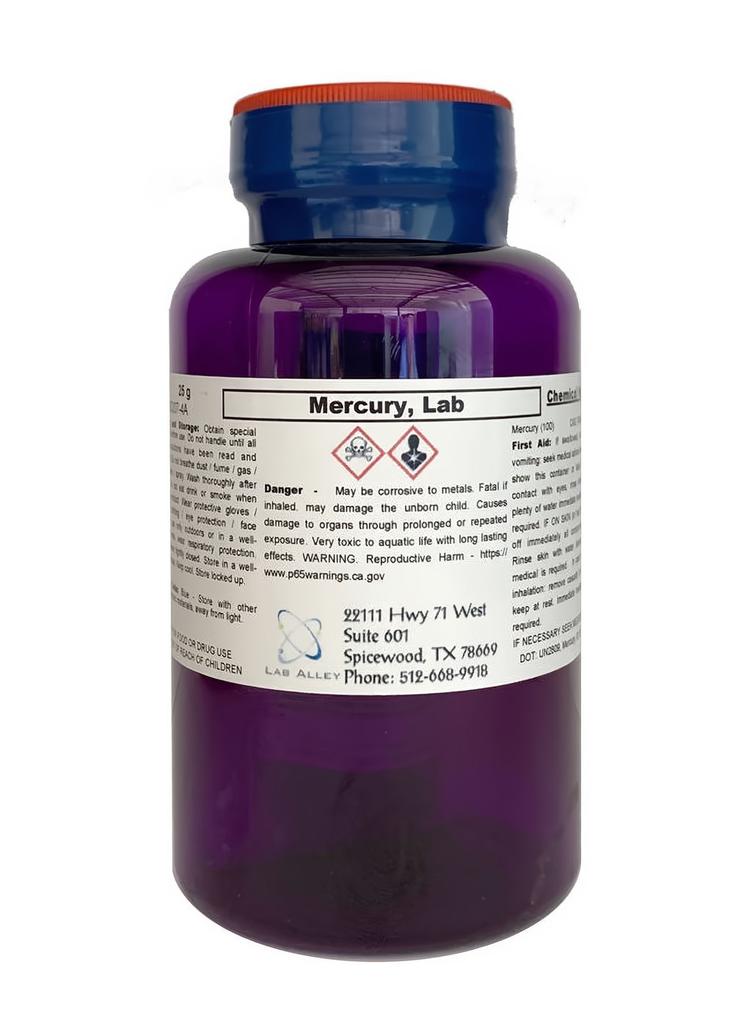
The safest and most responsible step for handling 1 liter of mercury is to contact a certified hazardous waste disposal center. In the United States, many counties organize Household Hazardous Waste (HHW) collection events. These programs accept toxic materials, including mercury, free of charge from households.
- Check with your local county or city waste management for upcoming HHW days.
- Do not dispose of mercury in regular trash, drains, or sewers.
- Avoid giving mercury to scrap dealers, as they may lack proper disposal means.
- Proper disposal prevents environmental contamination and legal repercussions.
Legal and Environmental Considerations
Mercury disposal is legally controlled in many jurisdictions. Releasing mercury into the environment leads to persistent contamination of soil and water and bioaccumulation in wildlife.
Improper containment or disposal carries significant civil and criminal liabilities. Spills from one liter can require expensive professional cleanup, often exceeding the value of property impacted.
Handling and Storage Recommendations
If immediate disposal is not feasible, temporary storage must be safe. Mercury should be kept in a container that is:
- Impervious to mercury vapor and liquid.
- Unbreakable and tightly sealed.
- Stored in a cool, ventilated area, away from heat sources.
- Clearly labeled as hazardous material.
Transporting mercury requires similar care. Containers must be secure to prevent spills and sealed to avoid vapor release. It is advisable to use specialized transport services where applicable.
Possible Uses for 1 Liter of Mercury
Scientific Demonstrations and Education
Mercury remains useful in scientific contexts for certain demonstrations due to its unique properties. Examples include barometer construction and physics experiments demonstrating fluid dynamics or electromagnetic effects.
- Making a barometer demonstrates atmospheric pressure concepts.
- Rotating a bowl of mercury can illustrate centrifugal effects.
- Using electric current to move mercury demonstrates Lorentz force.
These activities require strict safety protocols and are generally limited to trained professionals or instructional environments equipped to handle hazardous materials.
Gold Recovery from Electronic Components
Mercury can amalgamate with gold, making it useful in artisanal or small-scale gold recovery. The metal dissolves gold to create an amalgam, which can then be processed to separate the gold.
This method is hazardous given mercury’s toxicity. It should be avoided by untrained individuals. Legal restrictions also apply, and safer, modern alternatives exist.
Chemical Conversion to Safer Compounds
Experienced chemists may convert mercury into Mercury(II) sulfide (HgS), a solid mineral form that is less toxic and more manageable. This chemical form minimizes vapor emission and environmental risk.
This process is complex, requiring chemical knowledge, controlled conditions, and appropriate personal protective equipment.
Selling Mercury
Mercury has a market value, roughly around $20 per kilogram, making 1 liter (about 13.5 kg) worth approximately $270 to $300 under ideal conditions. However, market price fluctuates, and buyers may offer less.
- Contact companies specializing in precious metals or mercury sales.
- Verify the buyer’s credentials to ensure responsible handling.
- Be cautious transporting mercury to buyers due to hazardous nature.
- Some dealers may take mercury for free, especially with proper safety protocols.
Selling mercury requires adherence to local and federal regulations. Documentation and licensing may be needed.
Summary of Recommendations
- Disposal: Contact local hazardous waste facilities; utilize HHW days for safe disposal.
- Storage: Store mercury in sealed, unbreakable containers; keep in secure, ventilated environments.
- Handling: Use personal protective equipment; avoid spilling or vapor release.
- Use: Limited to scientific demonstrations, gold recovery by trained professionals, or chemical conversion.
- Selling: Sell to certified metal buyers with proper authorization and transport precautions.
- Legal considerations: Follow all local regulations to avoid civil and criminal liabilities.
Key Takeaways
- Mercury is hazardous and requires careful disposal or handling.
- Contact certified hazardous waste disposal events or centers for surrender.
- Do not discard mercury with household trash or via drains.
- Use tightly sealed, unbreakable containers for storage and transportation.
- Specialized use must be done by professionals with proper permits.
- Mercury selling requires verification and responsible handling practices.
- Improper disposal can cause long-term environmental and health damage.
What to Do with 1L of Mercury Metal: The Ultimate Guide
What do you do with 1L of mercury metal? Simple: DO NOT throw it away or casually gift it to your neighbor. Mercury is no joke, and with that much liquid metal on your hands, your safest and smartest choice is to dispose of it as hazardous waste. Once you understand the stakes, the rest is managing storage, disposal, or rare uses with care and knowledge.
Let’s break down why mercury is such a troublemaker, what you can realistically do with it, and how to keep everyone safe—yes, even your cat.
Why Is 1L of Mercury So Risky?
Mercury is unique: a heavy, silvery liquid metal that’s toxic, volatile, and persistent. One liter weighs roughly 14 kg (around 30 pounds). That’s a lot of heavy metal to mishandle.
- Store it wrong, and it can contaminate a building for decades. A spill could make your house uninhabitable. Imagine that—your own home turned into a hazmat zone. No fun.
- You need airtight, unbreakable containers. Glass jars? Absolutely not! Mercury easily breaks glass, leading to dangerous spills.
- Legal consequences and civil liability can be massive. If mercury contaminates public spaces or others’ property, you might find yourself in deep trouble.
Bottom line? Unless you’re a licensed professional with specialized facilities (and maybe a hazmat suit or two), don’t hoard it!
Got Mercury? Dispose of It Like a Pro
The best plan of attack is to treat mercury as toxic waste. Check your local resources—many counties in the U.S. run Household Hazardous Waste (HHW) collection days.
- Find your county dump or landfill’s HHW schedule. These events accept mercury for free. This is your golden ticket for responsible disposal.
- Contact local hazardous materials (HazMat) agencies if you want swift solutions. They’ll gladly take mercury and handle it professionally.
- Never dump mercury into the trash or down the drain.
- Don’t hand it to scrap dealers unless they specifically confirm proper hazardous waste procedures. Many don’t handle mercury safely, risking environmental contamination.
Think of disposal as a gift to the environment—and future generations. Don’t be the person remembered for that mercury disaster.
Is Selling Mercury an Option?
Mercury isn’t worthless. It’s currently around $20 per kilogram, so 1 liter (about 14 kg) might fetch $280, or realistically somewhere around $100 depending on the market and purity.
If selling sounds tempting, here are a few tips:
- Reach out to companies specializing in precious metals. Some buy mercury or may take it at no cost as a service.
- Scrap metal dealers might buy it, but only if they follow strict safety protocols.
- Handle it carefully during transport. Spillage on the highway is nobody’s idea of fun.
- Selling mercury in smaller quantities might attract hobbyists or labs. But do your homework on legal and safety requirements.
Bottom line: You can make some cash, but the hassle and risks often outweigh the benefits for the average person.
Creative and Scientific Uses for Mercury
Some may wonder if mercury can serve a hobby or scientific purpose. Sure, but these uses are niche, controlled, and require expertise.
- Scientific Demonstrations: Educators often use mercury to demonstrate principles of physics and vacuum—a barometer shows mercury’s unique column behavior. Pouring mercury into bowls for rotation experiments dazzles science students and illustrates fluid dynamics.
- Gold Recovery: Mercury dissolves gold, a trick used to recover gold particles from electronic waste. However, this is dangerous and requires proper protective gear and containment.
- Chemical Conversions: Experienced chemists can convert elemental mercury to mercury(II) sulfide, which is far safer to handle and dispose of—but this is advanced chemistry territory.
Trying these at home is NOT recommended. Mercury vapors are toxic even at low levels, and mishandling leads to lifelong health problems.
Smart Handling and Storage Tips
If you must keep mercury temporarily, safety first:
- Seal it in a container that won’t break or leak—think high-grade, airtight metal or specialized plastic.
- Store away from heat or direct sunlight. Mercury expands and contracts with temperature, risking container failure.
- Keep the container in a secondary containment, like a sealed box, to catch any leaks.
- Transport it carefully, secure it like liquid gold (because it sort of is), and avoid jostling.
Mildly humorous thought: Treat your mercury like a diva celebrity. Handle with care, keep it in a safe dressing room, and don’t let it spill drama all over town.
Summing It Up
So you’ve got 1L of mercury. What do you do?
Dispose of it via local Hazardous Waste programs. That’s the clean, responsible way to keep people and the planet safe. Or, if you really want to take a shiny risk, sell it to trustworthy precious metal dealers—but never let it out of your control toss it like garbage—that’s just asking for trouble.
If you’re a scientific soul or chemist, use it only with proper safety gear and knowledge. Mercury offers amazing demonstrations if done correctly, but it’s no toy.
Does this make you rethink that old mercury thermometer in your attic? Probably! Mercury might be sleek and fascinating, but it demands respect and caution.
After all, a liter of liquid metal isn’t your typical kitchen liquid, and handling it like one could cost you a lot more than you bargained for.
“Mercury: beautiful, deadly, and better off in a hazmat container than your living room.”
Can I safely store 1L of mercury at home?
Storing 1L of mercury is risky unless you have proper facilities and licensing. It must be sealed in an unbreakable container. A spill could contaminate a building and create long-term health hazards. Avoid keeping it unless absolutely necessary.
How should I dispose of 1L of mercury?
Contact local hazardous waste facilities or look for Household Hazardous Waste (HHW) days in your area. They accept mercury for free. Never throw it in regular trash or give it to scrap dealers who may handle it improperly.
Is it possible to sell 1L of mercury?
Some precious metal buyers or scrap dealers may buy mercury, as it’s worth about $20 per kilogram. You might get around $100 for 1L. Transport it carefully and verify the buyer disposes of it properly.
What scientific uses are there for 1L of mercury?
Mercury can be used for making barometers, demonstrating physical effects like Lorentz force, or in fluid physics experiments. Such uses require careful handling and proper safety precautions.
Can mercury be converted into a safer material?
Experienced chemists can convert mercury to Mercury(II) sulfide, which is safer to store and handle. This process requires expertise and proper containment equipment.
Is mercury useful for gold recovery?
Mercury can dissolve gold from electronic components for recovery. However, this is hazardous and requires specialized containment and safety gear to avoid exposure.


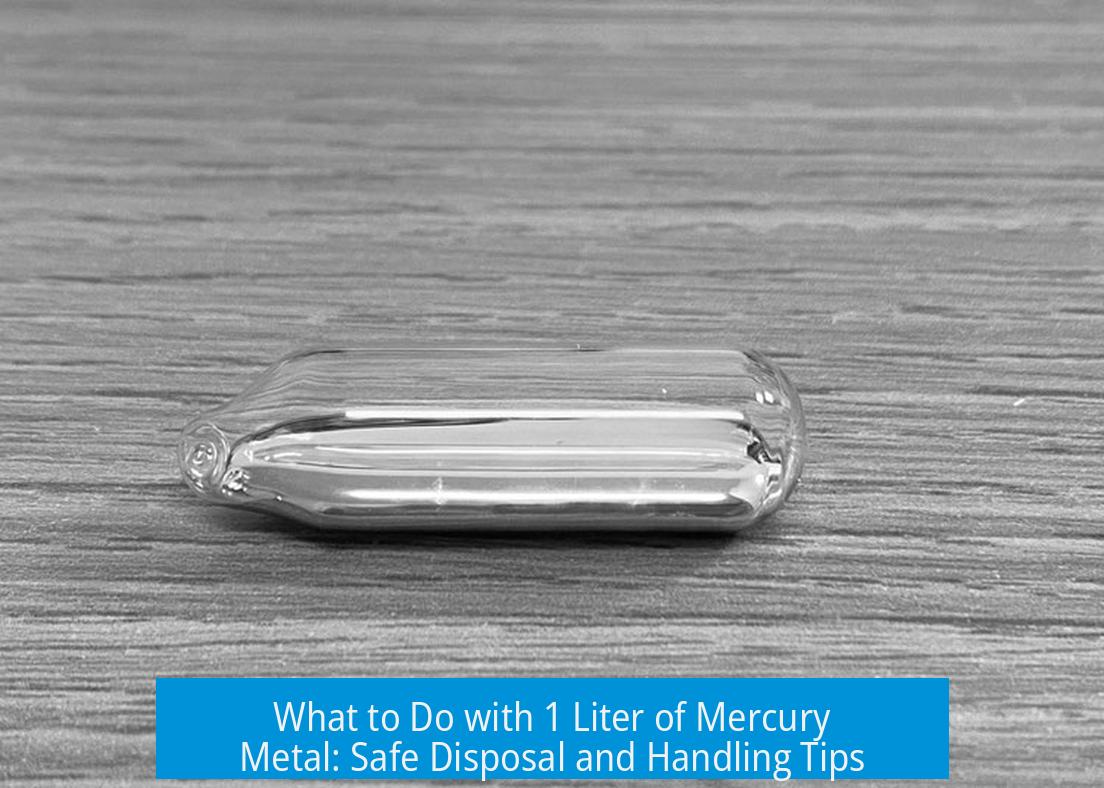


Leave a Comment